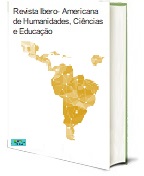JUDICIALIZATION OF HEALTH AND THE SUPPLY OF MEDICINES NOT IN THE “RENAME”
DOI:
https://doi.org/10.51891/rease.v8i5.5529Keywords:
Judicialization. Medicines. Health. Limits.Abstract
This study aims to highlight the importance of the Judiciary in the enforcement of the Fundamental Right to Health, which is an obligation of all Federal Entitites. Hence, seeking to compreheend the limits of the supply of medicines in lawsuits that seek the conviction of the State in the face of the omission in the Executive area. The reseach is classified as qualitative, descriptive and bibliographical, based on the doctrine, legislation and jurisprudence, among other sources. It was found that the Federal Supreme Court recently established that the supply of medicines is limited to the official list, to ensure that the whole society benefits from it. However, exceptionally, the State may be compelled to supply other medicines, if proved that specifc requirements are met, for exemple the impossibility of the citizen to bear with the costs and the nonexistence in the Unified Health System.
Downloads
Downloads
Published
How to Cite
Issue
Section
Categories
License
Atribuição CC BY

